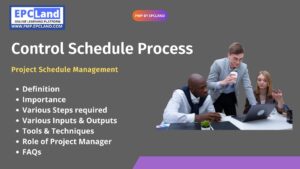Estimating activity duration is an important part of project schedule management. It involves determining the amount of time it will take to complete a specific task or set of tasks within a project. Accurately estimating activity duration helps project managers to plan and schedule project activities, allocate resources, and identify potential delays or issues. There are several methods for estimating activity duration, including expert judgment, historical data, and three-point estimation. It’s important to consider various factors such as complexity, dependencies, and resource availability when estimating activity duration. Additionally, it’s important to continually monitor and update activity duration estimates as the project progresses to ensure that the schedule remains on track. Overall, effective activity duration estimation is crucial for successful project schedule management and achieving project goals on time and within budget.
Importance of “Estimate Activity Duration” in Project Schedule Management
Estimating activity duration is an essential component of project schedule management as it helps project managers to effectively plan and schedule project activities, allocate resources, and identify potential delays or issues. By accurately estimating the duration of each task or set of tasks, project managers can create a detailed project schedule that outlines the timeline for the entire project. This allows them to identify potential bottlenecks or issues early on and make adjustments as needed.
Additionally, accurate activity duration estimates are crucial for determining the overall project schedule and budget. If the duration of a task is underestimated, it can lead to delays and cost overruns. On the other hand, if the duration is overestimated, resources may be wasted, and the project may take longer than necessary to complete.
Furthermore, effective activity duration estimation also helps to identify and mitigate risks, as project managers can anticipate potential delays or issues and take measures to prevent them from occurring.
Attempt Quiz-1 on Estimate Activity Duration Process
Various Steps are required in “Estimate Activity Duration” in Project Schedule Management
There are several steps involved in estimating activity duration in project schedule management, including:
- Identify the task or set of tasks: The first step is to clearly define the task or set of tasks that need to be completed. This includes breaking down larger tasks into smaller, more manageable sub-tasks.
- Gather information: Next, gather information about the task or set of tasks, such as historical data, expert opinions, and any relevant documents or templates. This information can be used to determine the complexity of the task, any dependencies, and the resources required to complete it.
- Use estimation techniques: Use estimation techniques such as expert judgment, historical data, or three-point estimation to determine the duration of the task or set of tasks.
- Identify potential risks: Identify any potential risks or issues that may impact the duration of the task, such as resource constraints, weather, or other external factors.
- Review and update: Review and update the activity duration estimates as the project progresses. As new information becomes available, the estimates may need to be adjusted to ensure the schedule remains on track.
- Communicate with stakeholders: Communicate the activity duration estimates to all stakeholders, including project team members, managers, and clients, to ensure everyone is aware of the schedule and any potential issues.
- Monitor progress: Continuously monitor progress and compare it with the activity duration estimates. Identify any variances and take corrective actions as necessary.
Overall, it’s important to use a systematic approach when estimating activity duration, to ensure that the project schedule is accurate and realistic and that the project goals are met on time and within budget.
Tools & Techniques used for “Estimate Activity Duration” in Project Schedule Management
There are several tools and techniques that can be used for estimating activity duration in project schedule management. These include:
- Expert judgment: This technique involves consulting with experts or experienced team members who have knowledge of the task or activity being estimated. This can provide valuable insight into the duration of the task and any potential risks or issues.
- Historical data: This technique involves using data from previous projects or similar tasks to estimate the duration of the current task. This can provide a more accurate estimate, as it is based on actual data.
- Three-point estimation: This technique involves using a range of possible durations for a task, including a best-case scenario, most likely scenario, and worst-case scenario. This can provide a more realistic estimate and help to identify potential risks or issues.
- Planning poker: This is a consensus-based technique that involves a group of team members who use numbered cards to estimate the duration of a task. The group members discuss their estimates and come to a consensus on the final estimate.
- PERT (Program Evaluation and Review Technique): This is a statistical method that uses a network diagram to estimate the duration of a task by analyzing the critical path and identifying the critical tasks that need to be completed on time.
- Gantt Chart: Gantt chart is a graphical representation of the schedule and shows the task, duration and dependencies. It helps to visualize the project schedule and understand how the tasks interrelate.
- MS Project: It is a project management software that helps to create, track, and analyze project schedules. It allows users to create and manage task lists, assign resources, track progress, and generate reports.
Overall, the choice of tool or technique will depend on the specific needs of the project and the availability of resources, but using a combination of these tools and techniques can help to provide a more accurate estimate of activity duration.
Inputs & Outputs for “Estimate Activity Duration” in Project Schedule Management
The inputs and outputs for estimating activity duration in project schedule management include:
Inputs:
- Work breakdown structure (WBS): The WBS is a hierarchical decomposition of the project’s objectives into manageable tasks and subtasks that provide a clear understanding of what needs to be accomplished.
- Project scope statement: This document outlines the project’s objectives, deliverables, and requirements, which can be used to identify the tasks and subtasks that need to be estimated.
- Resource availability: Information about the resources available for the project, such as personnel, materials, and equipment, can be used to determine the duration of the tasks.
- Risk register: The risk register contains information about the potential risks that may impact the project schedule, and can be used to identify potential issues that may affect the duration of tasks.
- Historical data: Data from previous projects or similar tasks can be used to provide a more accurate estimate of the duration of the current task.
Outputs:
- Activity duration estimates: The output of this process is a detailed estimate of the duration of each task or set of tasks, which can be used to create a project schedule.
- Schedule network diagrams: These diagrams, such as PERT or Gantt chart, provide a visual representation of the project schedule, including the dependencies between tasks and the critical path.
- Resource histograms: These histograms are used to display the resources usage and availability over time, it helps to identify any potential resource constraints.
- Update project documents: The activity duration estimates and schedule network diagrams are used to update project documents such as the project scope statement, project schedule, and risk register.
- Communication plan: The activity duration estimates are communicated to stakeholders and team members to ensure that everyone is aware of the schedule and any potential issues.
- Project management plan: The project management plan is updated to reflect the activity duration estimates and any necessary changes to the project schedule.
Role of Project Manager in “Estimate Activity Duration” in Project Schedule Management
The role of a project manager in estimating activity duration in project schedule management is to provide leadership and direction for the process. The project manager is responsible for:
- Establishing the project schedule management plan: The project manager will develop a plan that outlines the procedures and guidelines for estimating activity duration.
- Coordinating the estimation process: The project manager is responsible for coordinating the activities of the project team, including the identification of tasks, the collection of data, and the analysis of the data to determine the duration of the tasks.
- Identifying and managing risks: The project manager must identify any potential risks that may impact the project schedule and take steps to mitigate or avoid these risks.
- Communicating with stakeholders: The project manager must communicate the project schedule and any changes to stakeholders, including team members, sponsors, and other stakeholders.
- Managing resources: The project manager must ensure that the necessary resources, such as personnel, materials, and equipment, are available to complete the tasks on schedule.
- Monitoring and controlling the schedule: The project manager must monitor and control the schedule to ensure that the project stays on track and that any necessary adjustments are made in a timely manner.
- Making decisions: The project manager must make decisions related to the project schedule, such as determining the critical path or adjusting the schedule to accommodate changes in the project scope.
Overall, the project manager plays a critical role in ensuring that the project schedule is accurate and that the project stays on track. The project manager must use the appropriate tools and techniques to estimate activity duration, and must communicate effectively with stakeholders to ensure that everyone is aware of the project schedule and any potential issues.
Attempt Quiz-2 on Estimate Activity Duration Process
Final Take away on Estimate Activity Duration Process
Estimating activity duration is an important aspect of project schedule management. It involves the identification of tasks, the collection of data, and the analysis of that data to determine the duration of the tasks. The project manager plays a critical role in this process, providing leadership and direction for the project team, and ensuring that the project stays on track.
Accurately estimating activity duration is essential for creating a realistic project schedule and ensuring that the project is completed on time. It also helps in identifying potential issues, such as resource constraints, and taking steps to mitigate or avoid them. Additionally, it helps in the communication of the project schedule to stakeholders, identifying the critical path and making adjustments accordingly.
Tools and techniques such as Work breakdown structure, PERT and Gantt chart, and historical data can be used to provide a more accurate estimate of the duration of tasks. The outputs of this process include detailed estimates of the duration of each task, schedule network diagrams, resource histograms, and updated project documents. Overall, estimating activity duration is an essential step in project schedule management that can help ensure the success of a project.
FAQs on “Estimate Activity Duration” in Project Schedule Management
- What is the purpose of estimating activity duration in project schedule management?
The purpose of estimating activity duration is to determine the amount of time required to complete specific tasks or sets of tasks within a project. This information is used to create a realistic project schedule, identify potential issues, and plan for resource usage.
- What are some common tools and techniques used to estimate activity duration?
Common tools and techniques include Work breakdown structure, PERT and Gantt chart, Three Point Estimation, Parametric Estimation and Historical data.
- What is the role of a project manager in estimating activity duration?
The role of a project manager in estimating activity duration is to provide leadership and direction for the process, coordinate the estimation process, identify and manage risks, communicate with stakeholders, manage resources, monitor and control the schedule, and make decisions related to the project schedule.
- How can historical data be used to estimate activity duration?
Historical data from previous projects or similar tasks can provide a more accurate estimate of the duration of the current task. This information can be used to identify patterns and trends that can be applied to the current project, such as the average duration for specific types of tasks or the impact of certain factors on task duration.
- How does the estimation of activity duration impact the project schedule?
Estimating activity duration is essential for creating a realistic project schedule. It helps identify the critical path, which is the sequence of tasks that must be completed on schedule to ensure that the project is completed on time. Accurate duration estimates also help identify potential issues, such as resource constraints, and allow for appropriate adjustments to be made to the project schedule.






















